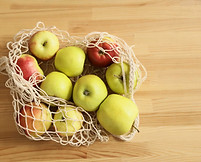Boost Your Health Mastering Phytonutrients in Your Diet
First of all, What is Phytonutrients? Phytonutrients are bioactive compounds that plants produce to protect themselves from environmental threats like UV radiation, pests, and diseases. When consumed by humans, these compounds offer a range of health benefits, including antioxidant, anti-inflammatory, and immune-boosting properties. There are thousands of phytonutrients, but some of the most studied include flavonoids, carotenoids, polyphenols, and glucosinolates.




The Health Benefits of Phytonutrients:
Incorporating a variety of phytonutrients into your diet can support your health in numerous ways:
-
Antioxidant Protection: Phytonutrients like flavonoids and polyphenols help neutralize free radicals, reducing oxidative stress and the risk of chronic diseases such as heart disease and cancer.
-
Anti-Inflammatory Effects: Many phytonutrients have anti-inflammatory properties, which can help reduce the risk of inflammation-related conditions like arthritis and cardiovascular disease.
-
Immune Support: Compounds like carotenoids and glucosinolates boost the immune system, helping your body defend against infections and illness.
How to Incorporate Phytonutrients into Your Diet:
To reap the full benefits of phytonutrients, aim to include a diverse range of colorful plant foods in your daily diet. Here’s how:
-
Eat the Rainbow: Different colors in fruits and vegetables represent different phytonutrients. For example, red tomatoes are rich in lycopene, while orange carrots are packed with beta-carotene. Incorporate a variety of colors to maximize your phytonutrient intake.
-
Opt for Whole Foods: Choose whole, minimally processed plant foods over supplements or extracts. Whole foods provide a synergistic combination of phytonutrients, fiber, vitamins, and minerals.
-
Experiment with New Foods: Explore new fruits, vegetables, and grains to introduce a wider range of phytonutrients into your diet. For instance, try adding cruciferous vegetables like broccoli and kale for glucosinolates, or berries for anthocyanins.
Simple Phytonutrient-Rich Meal Ideas:
Here are some easy ways to boost your phytonutrient intake:
-
Smoothies: Blend a mix of leafy greens, berries, and a scoop of ground flaxseed for a phytonutrient-packed breakfast.
-
Stir-Fries: Sauté a colorful assortment of vegetables like bell peppers, broccoli, and carrots with garlic and ginger for a quick and nutritious dinner.
-
Salads: Build a salad with a variety of greens, tomatoes, avocados, nuts, and seeds. Top with a dressing made from olive oil and lemon juice for an extra dose of healthy fats and phytonutrients.
Conclusion:
Mastering phytonutrients in your diet is about embracing the diversity of plant foods available to us. By making a conscious effort to "eat the rainbow" and include a variety of colorful, whole foods in your meals, you can harness the full potential of these powerful compounds. Not only will you enjoy the vibrant tastes and textures of plant-based foods, but you’ll also be taking significant steps toward better health and longevity. Start today, and let nature’s health secrets work for you!

